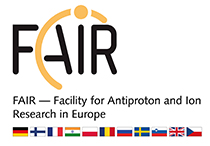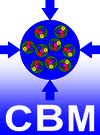
The Compressed Baryonic Matter (CBM) experiment will be one of the major scientific pillars of the future Facility for Antiproton and Ion Research (FAIR) in Darmstadt. The goal of the CBM research program is to explore the QCD phase diagram in the region of high baryon densities using high-energy nucleus-nucleus collisions. This includes the study of the equation-of-state of nuclear matter at neutron star core densities, and the search for phase transitions, chiral symmetry restoration, and exotic forms of (strange) QCD matter. The CBM detector is designed to measure the collective behavior of hadrons, together with rare diagnostic probes such as multi-strange hyperons, charmed particles and vector mesons decaying into lepton pairs with unprecedented precision and statistics. Most of these particles will be studied for the first time in the FAIR energy range. In order to achieve the required precision, the measurements will be performed at reaction rates up to 10 MHz. This requires very fast and radiation hard detectors, a novel data read-out and analysis concept including free streaming front-end electronics, and a high performance computing cluster for online event selection. Several of the CBM detector systems, the data read-out chain and event reconstruction will be commissioned and already used in experiments during the FAIR phase 0. The unique combination of an accelerator which delivers a high-intensity heavy-ion beam with a modern high-rate experiment based on innovative detector and computer technology offers optimal conditions for a research program with substantial discovery potential for fundamental properties of QCD matter.
HADES is a versatile detector for a precise spectroscopy of e+e- pairs (dielectrons) and charged hadrons produced in proton, pion and heavy ion induced reactions in a 1-3.5 GeV kinetic beam energy region. The detector has been set-up at GSI by an international collaboration of 17 institutions from 9 European countries. The main experimental goal is to investigate properties of dense nuclear matter created in the course of heavy ion collisions and ultimately learn about in-medium hadron properties (like masses, decay widths). The matter created in such collisions differs from the one studied at SPS, RHIC or LHC because it consists mainly of baryons (nucleons and its excited states- baryon resonances) and little mesons and can be compressed up to 3 times nuclear matter density for about 10-12 fm/c. Dielectron pairs originating from in-medium hadron decays and rare strange hadrons (kaons, hyperons) are the main probes measured in the experiment. Since conclusions on in-medium effects rely strongly on the understanding of hadron properties in vacuum and their production mechanism in nucleon-nucleon collisions a complementary program focusing on e+e-, kaon and hyperon (Σ, Λ) production in elementary collisions is also in progress. HADES also takes part in the Compressed Baryonic Matter program of FAIR.








